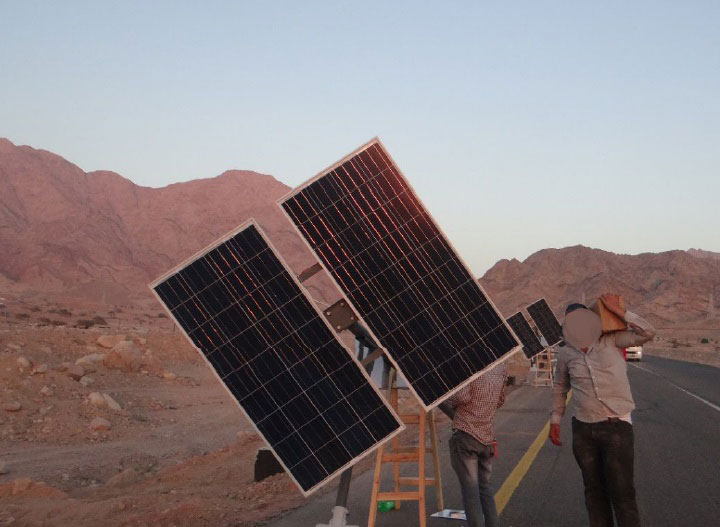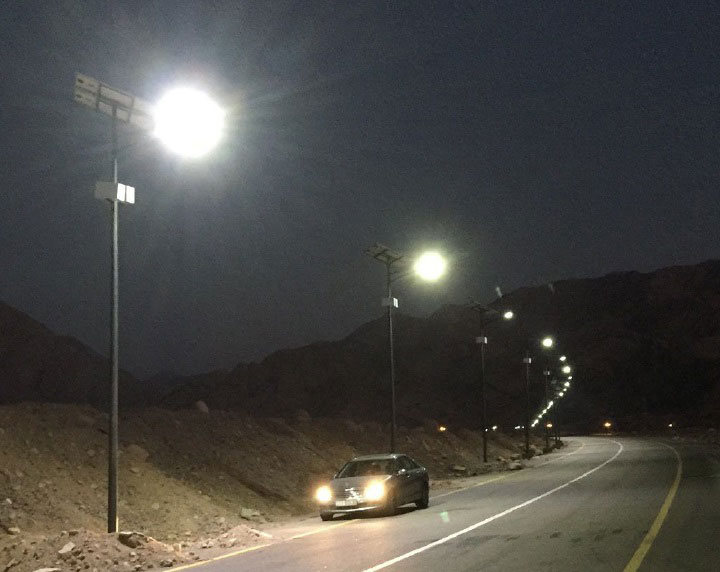Solar Street Light Installation Specification
Solar street lights are installed in several major steps; digging pits, assembling lights, and installing poles. However, every step is a small project. Sometimes it may not be known where to start. For example, if you are going to dig a foundation pit, you have to consider how big and how deep the pit is. The installation will be much smoother if there is a scientific sequence when assembling the luminaries. Some ignored small details may cause the malfunction of lights. Keep these installation specifications in mind will make the installation of the street lights nice and easy.
I. Choose Location

1. Ask the relevant personnel whether there are pipes, cables or other facilities that hinder the installation.
2. Observe if there are cables, wires, optical cables, etc. that obstruct the installation and use of solar street lights. Observe the surrounding area to see if there are trees, buildings or other obstructions that affect the installation of the light.
II. Digging pit

1. Read and understand related drawings such as foundation drawings, construction drawings and point maps.
2. Determine the installation position according to the point map. According to the base map and the construction drawing, draw the plane size of the foundation pit at the determined position.
3. After the foundation pit is dug, measure the length, width and depth of the pit with a tape measure to make sure the pit fulfilled the requirements of the drawings. Attention: Uniformity and protection of environment is required.
Uniformity : The stacking of muck should be unified. The muck should not be stacked or scattered at will.
Protection of environment : The muck is not allowed to be placed directly on the lawn or other green area, the site must be cleaned up after construction.
III. Pits requiremen

Ensure
1. Ensure the length, width and height of the foundation pit, exposed size, height of the bottom bolt, distance between the positioning plate, corresponding side of the foundation and the exposed size of the threading tube are correct. If the colloidal battery is used, the inner diameter of the battery compartment must be ensured to meet the drawing requirements.
2. Ensure the foundation pit and the road direction are paralleled, and make sure the positioning plate is paralleled to the foundation pit.
3. Ensure the positioning plate is in a horizontal line . And make sure the exposed surface of the foundation is smooth.
Clean up
1. Clean up the excess concrete debris in time.
2. Clean up the concrete slag at the bottom of the battery compartment in time. (for colloidal battery solar street lights).
3. Clean up the concrete on the positioning plate and the bottom bolt in time.
Not allowed
1. The foundation pit is not allowed to dig until the size is perfectly correct.
2. Concrete is not allowed to be placed directly on the ground.
3. It is not allowed to proceed to the next installation until the clean up is finished and the dimensions meet the requirements.
IV. Installation of lamps

1. Make sure the transportation of materials, threading of wires, assembling of lamp, connection of wires, assembling of poles, installation of poles, installation of batteries, installation of controllers, debugging, cleaning of working site and other processes are clearly distributed, and assign special personnel to manage each task.
2. Placing a variety of materials in an orderly way. Make it easy to fetch and use.
3. Make sure the lamps, poles and battery components etc. are assembled correctly and wires are connected correctly.
4. Ensure that the bolts between the mating parts are tightened
5. Ensure that component wiring detection, power supply separation detection, battery connection detection, and light source detection are detected well.
6. Pay attention to safety when stalling poles, including personnel safety, item safety, and safety of surrounding people, buildings and cables.
7. Debugging after installation, to ensure that the installation is correct.
8. Make sure the working site is cleaned up after the installation. The staff should not leave until the working site is restored to it’s original appearance.
